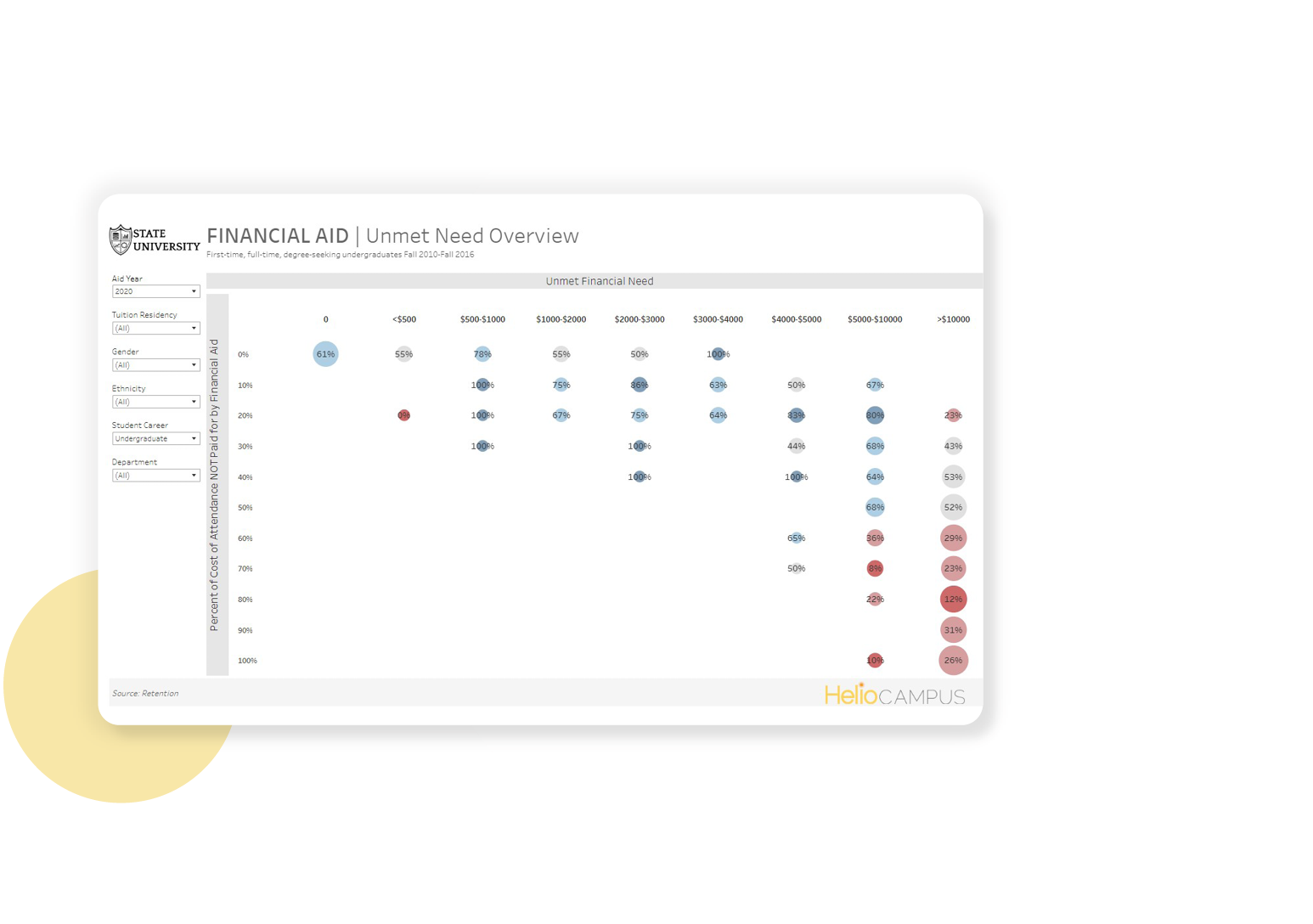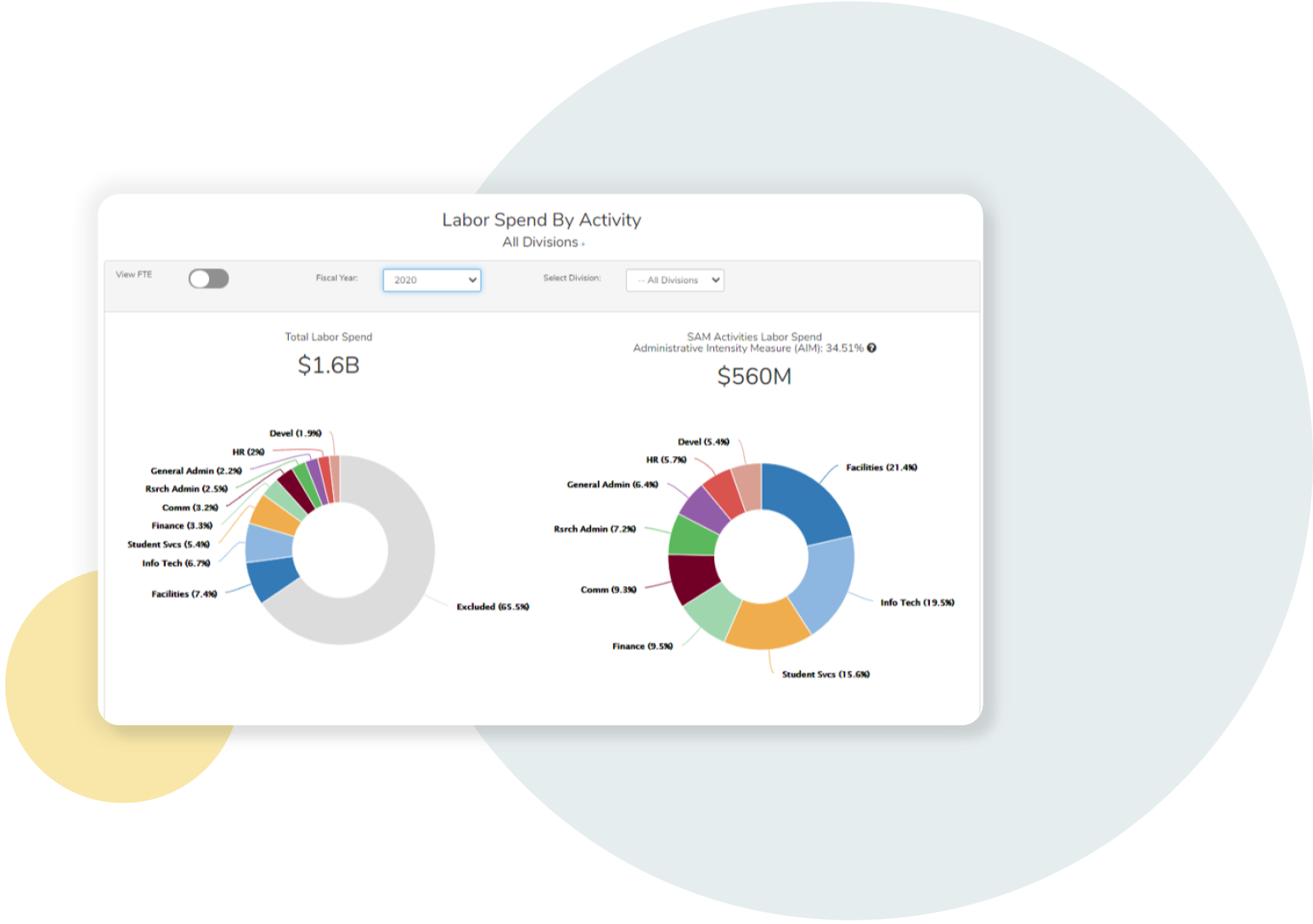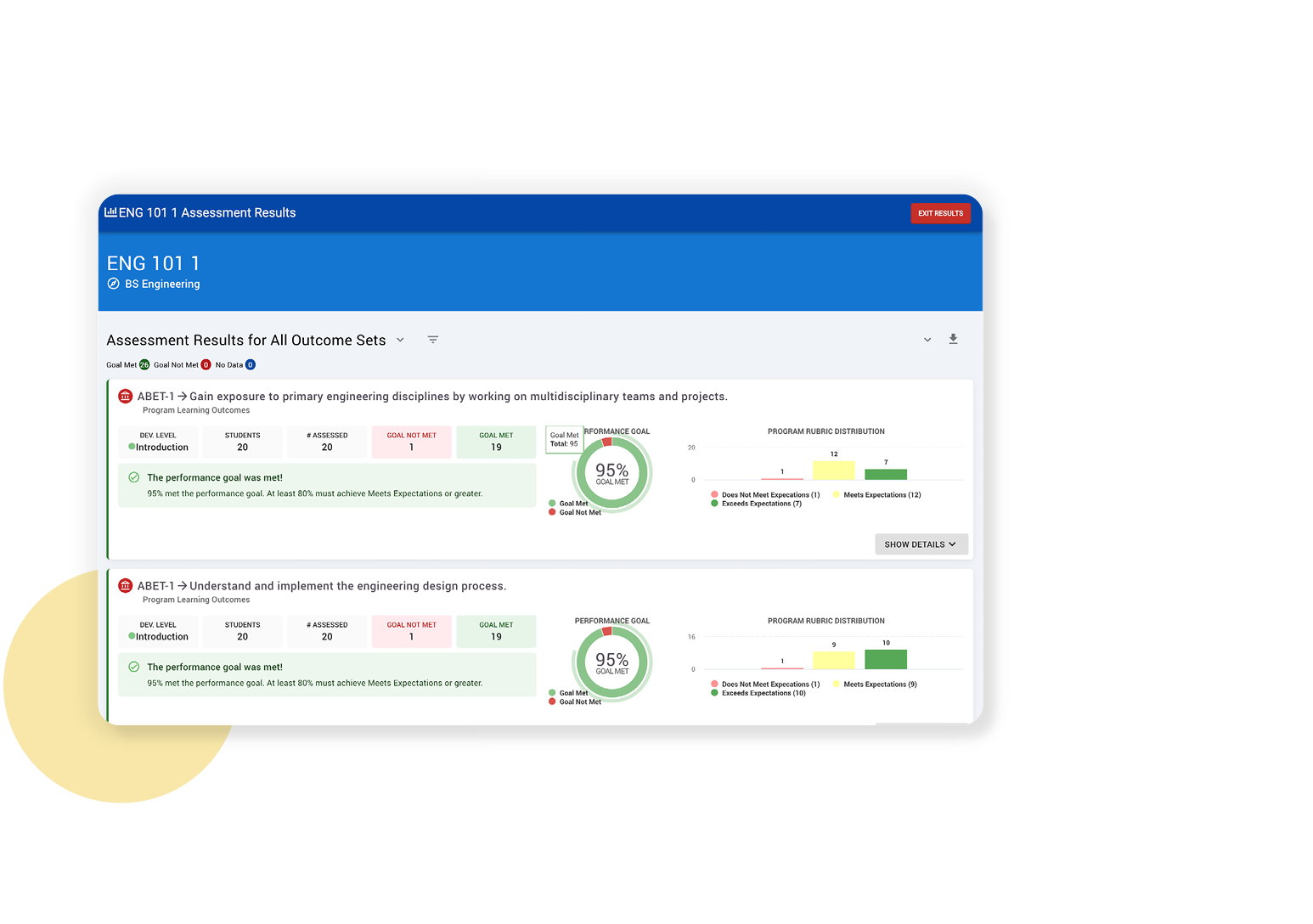Institutional Performance Management
Move forward with precision
Drive enrollment & retention, manage expenses, and improve learning outcomes. HelioCampus helps you navigate today's high stakes with AI-ready Data Analytics, Financial Intelligence tools, and a robust Assessment & Credentialing platform.
Trusted By


.png)


Unlocking insights with Institutional Performance Management
HelioCampus helps higher education institutions see, set, and track actionable opportunities for continuous improvement using Institutional Performance Management tools and practices. We partner with you to optimize your data infrastructure, implement AI-powered models, automate manual workflows, and evaluate investments to bring your strategic mission to life.
Data Analytics
Empower campus leaders to ensure student success, accelerate decision-making, and optimize operational processes with a secure data platform that helps you uncover actionable insights from across the student lifecycle. Plus the HelioCampus secret sauce - our data science and analytics services, which include proven machine learning and AI models - help you and your team build data fluency, drive change, and advance analytics priorities on your campus.

Financial Intelligence
Get deep financial insights to power essential administrative operations like annual budgeting, workforce planning, and financial sustainability efforts. Only HelioCampus offers higher ed finance and operations leaders access to benchmarked labor data and a finance community of practice to help you plan for a variety of scenarios, understand the direct cost of instruction, mitigate risks, and chart a financial path to their mission.
Explore Financial Intelligence

Assessment and Credentialing
Assess student learning outcomes in real-time with a unified platform that empowers you to seamlessly access assessment data and leverage it for accreditation, planning, and continuous improvement. Our technology gives stakeholders - from students to faculty and administrators - fast access to the data and evidence they need across courses, programs, and outcomes.
Explore Assessment and Credentialing




Transformation takes more than technology
Through the discipline of Institutional Performance Management, HelioCampus enables you to connect the dots across academic programming, administrative operations, and student learning outcomes to power integrated planning and continuous improvement.
Making an impact with our clients
Working in higher education today requires leaders to navigate growing pressures in new ways. Hear how our clients and leadership team are thinking about this critical moment through the lens of Institutional Performance Management.
Powering insights for higher education at forward-thinking institutions








Explore our resources
Check out the blog for ideas and best practices to enhance your data analytics, financial intelligence, and assessment efforts.
3 Strategies for Continuous Improvement and Reporting in Higher Ed
Many higher education institutions today are “data-rich but insight-poor.” Between course completion rates, learning management system logs, end-of-term surveys,...
Turning Data Into Direction: Making Learning Outcomes Count
In the bustling corridors of higher education, data is everywhere. But without purposeful action, even the most meticulously gathered data can become just another report...
Why Data Governance Matters in Higher Education
Data is at the core of decision-making within higher education institutions. Whether it’s monitoring student success, improving resource allocation, or ensuring compliance,...
Bring insights to life and grow sustainably
See how HelioCampus can enhance your data analytics, financial intelligence, and institutional assessment capabilities.
